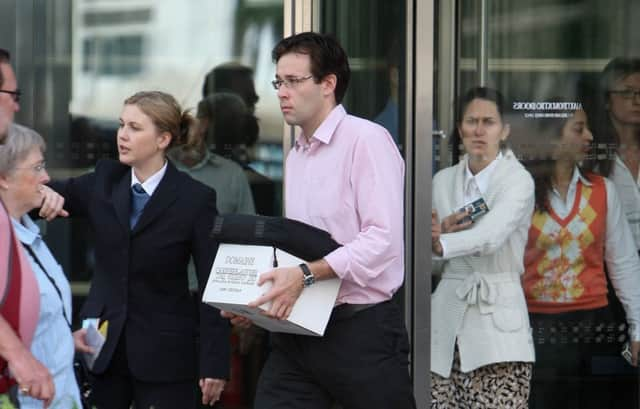Comment: A welcome return to the boom and bust cycle?


There’s a scene from my wife’s favourite movie, It’s a Wonderful Life, where the customers of Bailey Building and Loan make a run on the bank. I remember watching it for the umpteenth time in 2008 and thinking it was almost unimaginable that something like that would happen today.
Looking back a decade, what was about to unfold seems obvious – but at the time there was a different mindset. When I started off in work, I got a job at Bank of Scotland and my parents were thrilled: banks were a job for life, the shares always went up and so did their dividends.
Advertisement
Hide AdAdvertisement
Hide AdEven when Lehman Brothers collapsed, few people thought it would lead to anything significant on the high street. Investment banks were considered risky businesses and it didn’t seem like there should be wider implications.
As it later transpired, of course, it was a canary in the shaft. Lehman’s “risky” investments were the same kinds of assets that the high-street banks ultimately owned and depended on.
Back then, the idea of the day was to chase as high a return from savings as you could: Bradford & Bingley, Northern Rock, and a clutch of Icelandic banks were offering interest rates coming up for 6 per cent – healthy returns by any measure.
With the benefit of hindsight, people should have asked why these banks needed deposits so much and how the returns could be delivered. If they had scratched the surface, they would have found the banks running the tightest (then called “efficient”) balance sheets were also offering the highest rates.
However, few people understood the effect of the first domino and the ones who did tended to be marginal figures – not far away from the way it was portrayed in another film, The Big Short.
There was also the regulatory background. The competitiveness of UK banks on an ever-growing international stage was paramount in decision-makers’ minds and there were fears that a big name would move its headquarters abroad if local red tape became overly burdensome.
But, in a way, it all goes back to Gordon Brown’s pledge that there would be “no return to boom and bust” under his chancellorship.
On the face of it, it’s an admirable ambition: bust is difficult for everyone. Yet, it has its purpose. If you have 12 companies and a few collapse, then the well-run, sensible businesses usually progress. The successful companies that emerge tend to improve margins, lift wages, and boost productivity.
Advertisement
Hide AdAdvertisement
Hide AdBy contrast, if no one is failing, the only perceived advantage point is to take on more leverage or risks. In fact, without the stories of bust, people also tend to forget about that punishing experience and, suddenly, they think there’s no risk attached to excessive returns.
In the aftermath of a downturn and as the actions taken before and afterwards bed down, there are other unintended consequences too. The measures taken by central banks and governments – keeping interest rates at low levels and introducing quantitative easing – have staved off a downturn.
That would appear to be another positive development – but, in many ways, you could say that it hasn’t helped the economy: wage growth has been slow for a decade, while economic activity and productivity are plateauing.
Is that all about to change? Markets are at record levels, for some there are signs of economic distress, and some commentators say recession is around the corner. With Brexit looming, retail-facing businesses look to be facing a challenging time. Interest rates are rising and emerging markets are showing fragility.
These challenges may spook some people; but, for the most part, businesses seem well-positioned to deal with them. In fact, people’s mindsets are much healthier than they were ten years ago: the link between risk and reward is still firmly stuck in their minds.
Nevertheless, the economic cycle will kick in again at some point and a downturn without monetary defence will mean some businesses will hit the wall. Some bonds will default too. It could well be a black-and-white scenario that we’ve not been (as) used to dealing with for years.
While no one likes it, in many ways bust is a necessary evil: it’s a self-correction; a hit of the reset button. Recessionary conditions are tough, but they often set the foundations for the next period of real, meaningful economic and wage growth. And, I believe that’s something we’ve seriously missed over the past decade.
Disclaimers: The value of investments can fall and you may get back less than you invested. The opinions expressed in this document are not necessarily the views held throughout Brewin Dolphin Ltd.